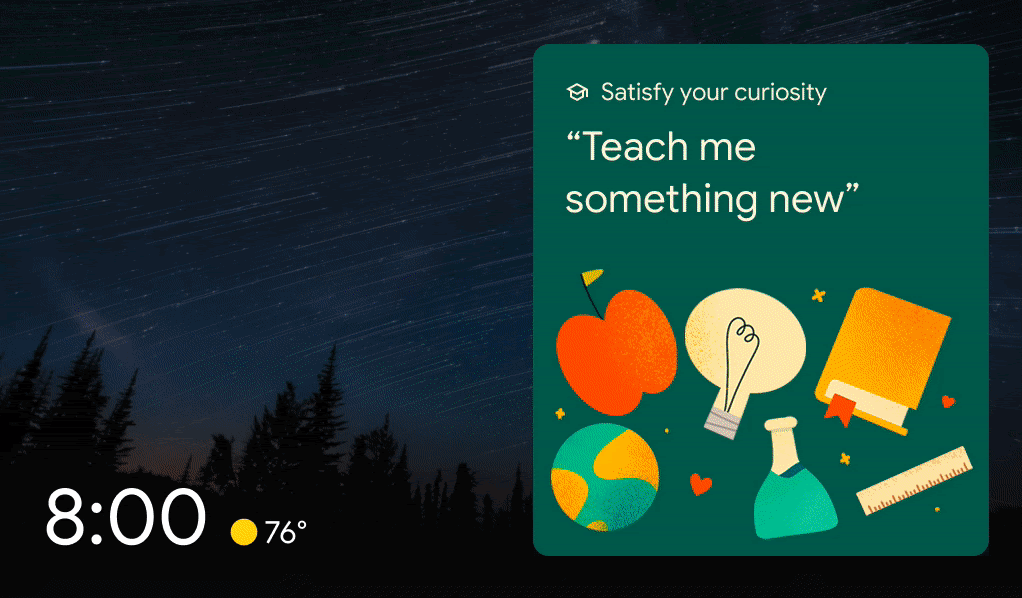New Google Assistant Developer Tools Promise Better Discovery and Smart Display Visuals
 Google shared a cornucopia of new tools at Google Assistant Developer Day in a rapid-fire series of demos. While the new App Actions for Android understandably drew a lot of attention, the new voices, smart display options, and voice app discovery enhancements announced set out a vision for the future of Google Assistant developers that is worth examining.
Google shared a cornucopia of new tools at Google Assistant Developer Day in a rapid-fire series of demos. While the new App Actions for Android understandably drew a lot of attention, the new voices, smart display options, and voice app discovery enhancements announced set out a vision for the future of Google Assistant developers that is worth examining.
Develop, Display
In June, Google rolled out its new Actions Builder console to simplify the creation of Google Actions, and many of the new features serve to augment those platforms. But, developers who have been using Dialogflow may be reluctant to go through the hassle of moving their projects and jumping into using Actions Builder. To streamline the matter, Google announced a migration tool that automates most of the moving process.
Once on Actions Builder, Google Assistant developers have several additional tools designed especially for smart displays. For instance, Google broadened the scope of the Interactive Canvas API Google released last year. Originally pitched for choose-your-own-adventure and other games, Interactive Canvas lets developers add complex visuals to go with the app’s audio facet on a smart display. Google is now offering the same visual elements to storytelling and educational apps so that a Google Action could have something to see as well as listen to depending on if it’s used with a smart display or not.
“Whether you’re building an action that teaches someone to cook, explains the phases of the moon, helps a family member with grammar, or takes you through an interactive adventure, you’ll have access to the full visual power of Interactive Canvas,” Google directors of product management Baris Gultekin and Payam Shodjai explained in a developer blog post.
Google isn’t forgetting about game developers, though. There’s a new hub of resources with source codes, design tips, and other guides for designing and launching voice-enabled games with visuals that work on a smart display. Before any new Google Action is published, however, developers can run their program through the new Actions Testing API that puts the voice apps through its paces to check for any conversational dead-ends or other broken bits of the program that need to be addressed before it goes live. To go with those under-the-hood improvements, Google released two new voices that are supposed to make Google Assistant sound more natural. The English voices leverage new language models and can switch in for existing Actions as well as new ones.
Display, Discover
Making great Google Assistant Actions doesn’t mean much if no one finds them. Google is attempting to address that issue with some of the other new developer features crafted around better discovery. Though still in Education and storytelling, Google Actions on smart displays were targeted again with two new built-in intents that Google will open public registration for soon. The idea is that a user would ask Google Assistant to teach them something new or tell them a story, and the voice assistant would show a cluster of relevant Actions from those filed under those headings, as seen in the gif at the top of the page. As another aid to discovery, Google announced Assistant Links, a relaunch of the Action Links feature released in 2018 that allows Google developer partners to put Google Assistant experiences into their websites and to deep link to their Google Assistant integration from any website.
As a boon to developers of apps that cost money or have premium options, Google is also smoothing the purchasing process on smart displays, adding support for voice match to authorize payment. To encourage sharing these smart display apps in a household, developers can now add household authentication tokens from the Actions console allowing an Action to move between devices in a home, starting on one in the living room and then moving into the bedroom and picking up again where they left off.
“One of the exciting things about the Smart Display is that it’s an inherently communal device,” Gultekin and Shodjai wrote. “So if you’re offering an experience that is meant to be enjoyed collaboratively, you need a way to share state between household members and between multiple devices. Let’s say you’re working on a puzzle and your roommate wants to help with a few pieces on the Smart Display. We’re introducing household authentication tokens so all users in a home can now share these types of experiences.”
Follow @voicebotai Follow @erichschwartz
Google Assistant Upgrades Action Developer Tools to Streamline Building and Running Voice Apps









